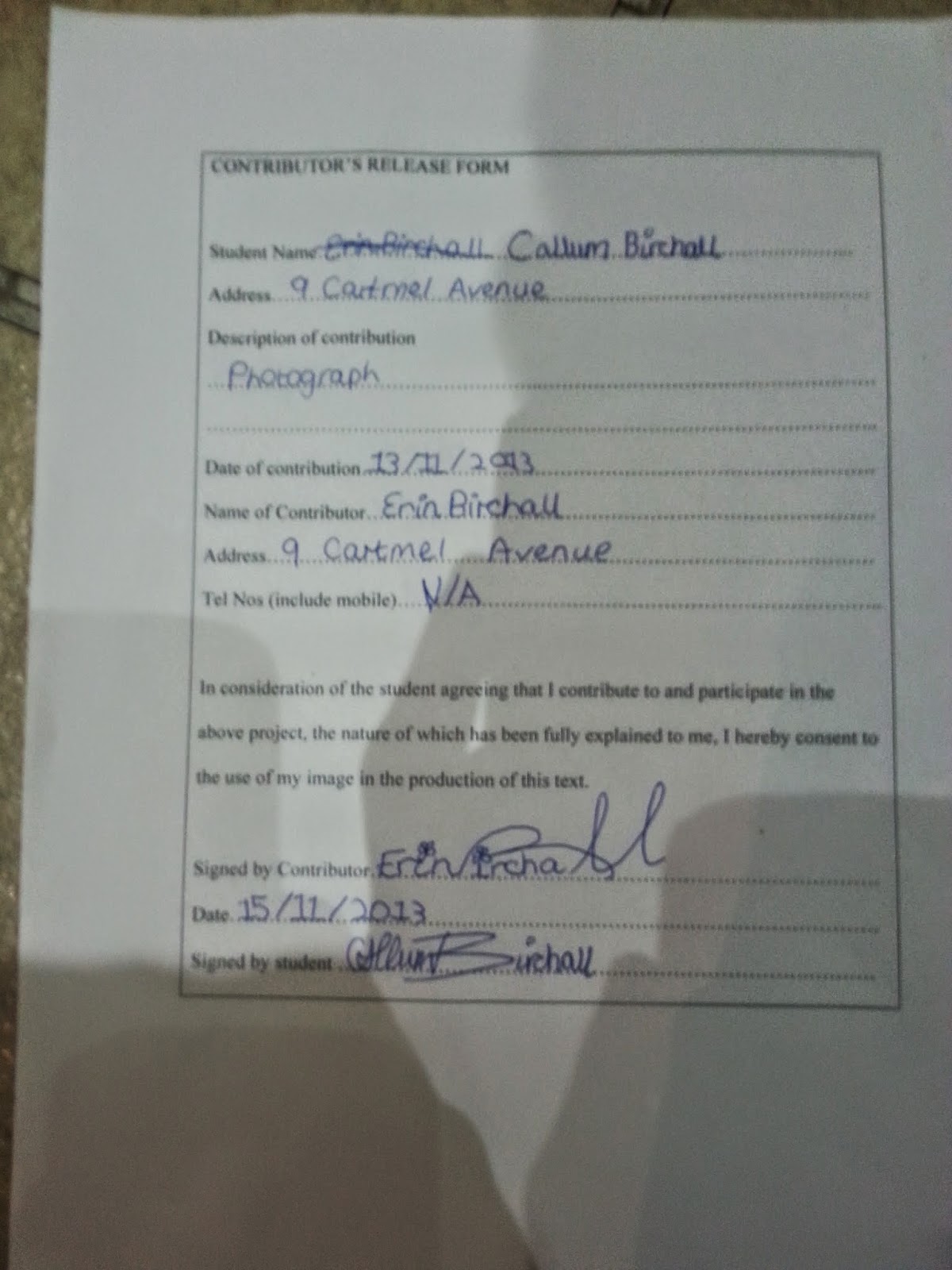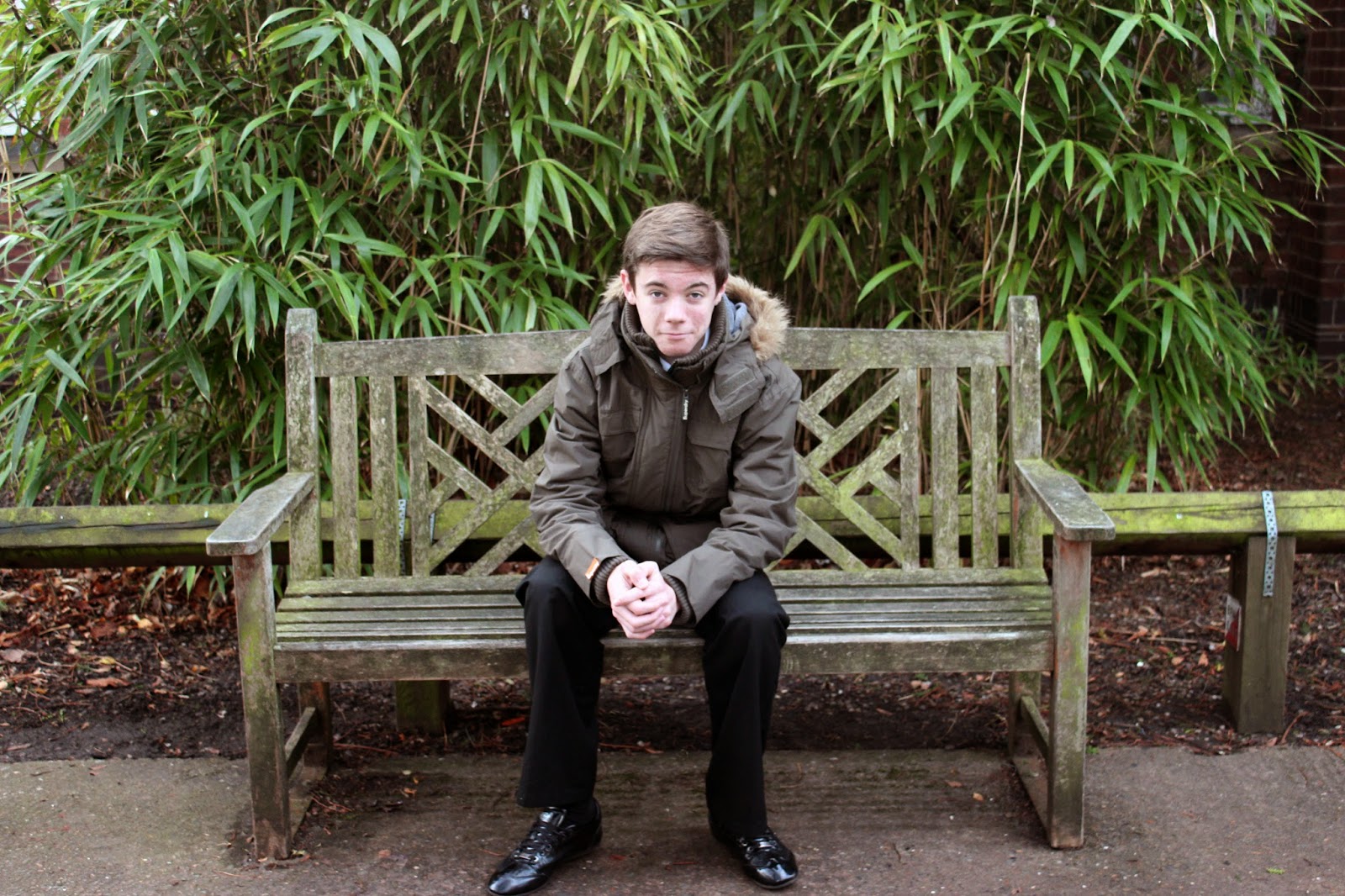Before including my photos in my magazines I wanted to give them that little bit more edge than a normal shot.
My first photo is of my band The Shades however I just took a picture of the three other guys. I was trying to react a photo that Biffy Clyro had already had taken which I had in my research.
Before taking my photo I had to set Kyle, Shaun and Spock up in the order that I wanted and gave them a mug shot board for them to hold as you can see below.
Once I took the photo I could move onto the editing, this was the most enjoyable part because I could experiment a bit with different tools. The first thing I did was I used the Lasso tool to cut round them so I had no background. Then I could work on the bruises and making parts seem bolder to do this I used the burn tool which allowed me to make out that they have bruises. My next challenge after the burn tool was to add colour to their skin and features which I simply used the adjustments moving up sliders until I got the effect I wanted. Then once all that was done I could move onto the background where I made a new layer and sent the mug shot wall to the back then the last thing I did was added a drop shadow to make it look more realistic.



























































